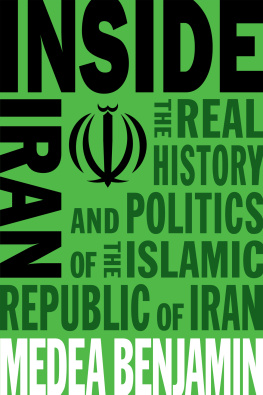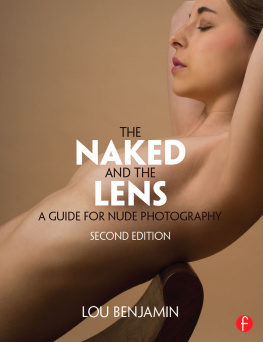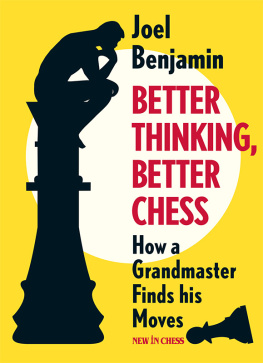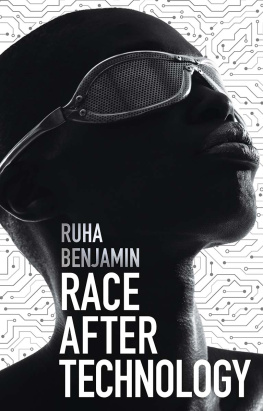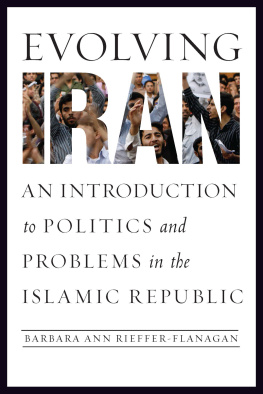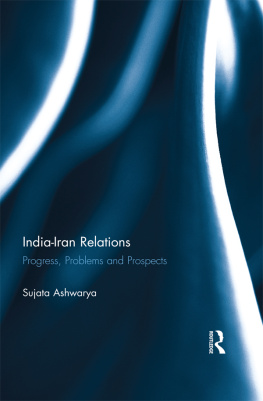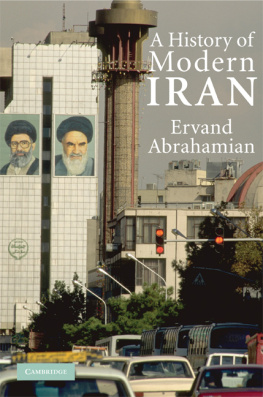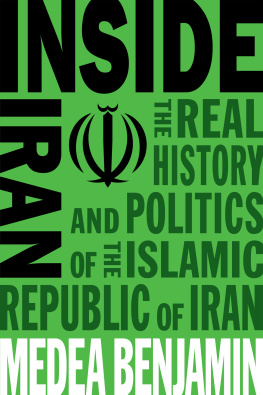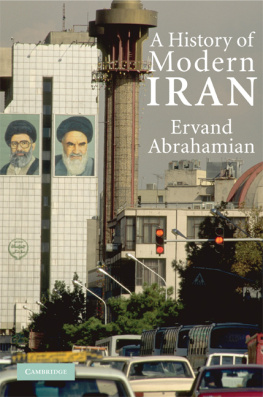
INSIDE IRAN

2018 Medea Benjamin
All rights information:
Visit our website at www.orbooks.com
First printing 2018.
Published for the book trade by OR Books in partnership with Counterpoint Press.
All rights reserved. No part of this book may be reproduced or transmitted in any form or by any means, electronic or mechanical, including photocopy, recording, or any information storage retrieval system, without permission in writing from the publisher, except brief passages for review purposes.
Library of Congress Cataloging-in-Publication Data: A catalog record for this book is available from the Library of Congress.
British Library Cataloging in Publication Data: A catalog record for this book is available from the British Library.
Typeset by Lapiz Digital, Chennai, India.
paperback ISBN 978-194486-965-6 ebook ISBN 978-194486-966-3
TABLE OF CONTENTS
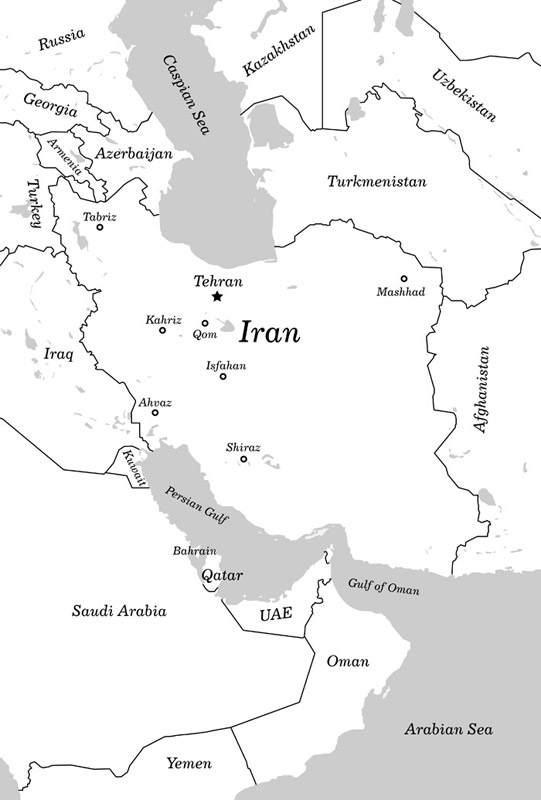
Map: Joe Perez/Poco Meloso
INTRODUCTION
My first trip to Iran was in 2008. I was traveling with my CODEPINK colleagues Jodie Evans and Ann Wright, and trip organizer Leila Zand. It was just after President Obamas historic election, and we were excited about the possibilities of improving U.S.-Iranian ties, even though Iran was still governed by conservative President Ahmadinejad. We considered ourselves citizen diplomats, modeling the kind of outreach we wanted to see in the new administration.
I must admit that I was apprehensive about traveling to Iran as an American Jew, since for decades the Iranian government has had hostile relations with the United States and Israel. On our very first day, we passed a building with a banner that read Death to America; Death to Israel. Habib Ahmadzadeh, an Iranian filmmaker who was showing us around, laughed. Dont take the slogans literallyor personally, he said. Theyre meant to show opposition to government policies, not people. Youll find that Iranians love Americans. Indeed, all the Iranians we met expressed admiration for Americans, even though U.S. economic sanctions were making their lives so difficult.
What surprised me even more was their admiration for Jews. We dont like the policies of the Israeli government, but we love Jews, I was told over and over again. Secular Iranians talked glowingly about Jewish creativity in Hollywood and business. Conservative Muslims said we have the same God, many of the same prophets, and are both are descendants from Abraham. A 2014 poll conducted by the US Anti-Defamation League left the pollsters stunned: It found that the most pro-Jewish people in the Middle East, aside from Israelis, were Iranians.
During this visit we met with all kinds of people, both publicly and privately. We met government officials, as well as people who had been imprisoned by the government. We met religious and secular folks, environmentalists, womens groups, and businesspeople. We had chance meetings with people on the street who invited us into their homes. We were overwhelmed by the world-renowned Iranian hospitality, where a guest is considered a gift from heaven. We were showered with copious amounts of delicious food, endless cups of sweet tea, and more gifts than we could fit in our suitcases.
Iranians, we learned, revere their Persian heritage and culture; they want you to know that they are not Arabs. They speak Farsi, not Arabic, and can recite centuries-old poems by the revered poets Hafez and Rumi. They recall Persian philosophers, artists, and scientists who go back to 500 B.C. They describe in vivid detail how their country has been invaded by Greeks, Arabs, Mongols, British, and Russians, but prevailed with their culture intact. Yes, they are Muslims, and overwhelmingly Shia Muslims, but they celebrate ancient Zoroastrian holidaysto the dismay of conservative clerics. The nations 2,500-year history shines through in their breathtaking architecture, universally acclaimed literature, and deeply spiritual music.
Since 1979, however, the Islamic revolution has turned the nation into a more sober and isolated society where religious leaders dictate everything from what women must wear in public to who can run for office. It also put U.S.-Iranian government relations on a collision course, starting with a hostage crisis at the U.S. Embassy in Tehran that turned into a 444-day diplomatic standoff.
In more recent times, Irans nuclear program became a flash point for U.S.-Iranian relations. The U.S., along with Britain, France, Germany, Russia, and China, spent years negotiating a compromise. An historic breakthrough came in 2015 with the signing of the Iran nuclear deal, known as the Joint Comprehensive Plan of Action (JCPOA). It was the signature foreign policy achievement of the Obama administration, a tribute to reformist Iranian President Rouhani, and an impressive example of what can be achieved when adversaries talk to each other.
Unfortunately, Donald Trump, from the time he was campaigning for president, called it the worst deal ever and vowed to tear it up. His first foreign trip as president was to Irans nemesis, Saudi Arabia, where he crowed about clinching Saudi arms sales worth $110 billion (most of which were deals already signed under Obama) and denounced Iran as a nation that spreads destruction and chaos across the region. He subsequently looked for ways to quash the nuclear deal, imposed fresh sanctions, and even included Iran on the list of countries whose residents were banned from entering the United States, despite the fact that not a single Iranian has ever taken part in a terrorist attack on U.S. soil.
Trumps effusive embrace of the Saudi rulers and antagonism towards Iran is not really a departure from what has been standard U.S. policy for the past 40 years. The Iranian government is certainly guilty of many abuses, including gross violations of free speech and assembly, restricting the rights of women, imprisoning dissidents, and executing people for nonviolent offenses. But when juxtaposed with Saudi Arabia, the U.S. ally is far more repressive internally. Iran has flawed national elections; Saudi Arabia doesnt have national elections at all. Irans women are restricted, but Saudi Arabia is a much more gender-segregated society. The West applauded the 2017 Saudi announcement that it would allow movie theatres (albeit segregated), while Iran has had a thriving film, theater, and music industry for decades.
In terms of foreign policy, Iran has plenty of blood on its hands, from its involvement in overseas attacks that have killed civilians to its military support for Bashar al-Assad in Syria. While not excusing Irans record, it is, nevertheless, fair to hold it up against the track record of Saudi Arabia. For decades, the Saudi regime has been spreading its extremist Wahhabi beliefs, which form the ideological underpinnings of terrorist groups from Al Qaeda to ISIS. In 2011, it crushed the nonviolent democratic uprising in Bahrain, and in 2015 it started bombing neighboring Yemen so mercilessly that millions were left hungry and displaced. I document these abuses in my book Kingdom of the Unjust: Behind the US Saudi Connections.
Of course, U.S. foreign policy is even more blood-stained. It is ironic to hear U.S. officials accuse Iran of meddling in the region, meaning the Middle East, when Iran is part of the region and it is the United States that has been sending its military to meddle in the region, including the 1991 Gulf War, the 2003 invasion of Iraq, and the 2011 overthrow of Qaddafi in Libya.
Next page
